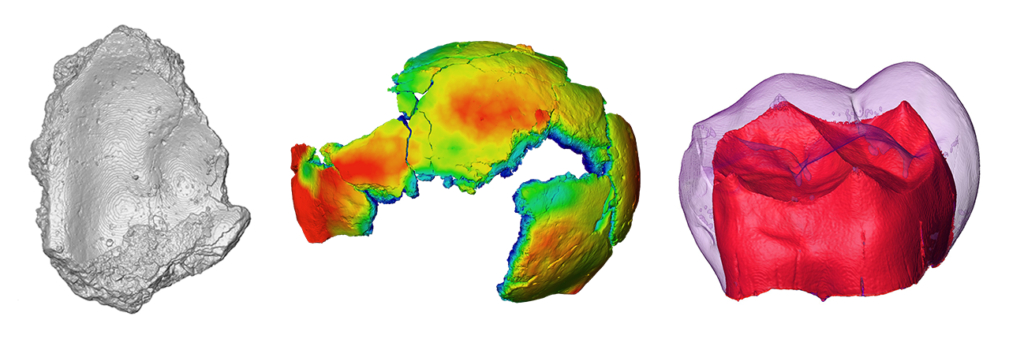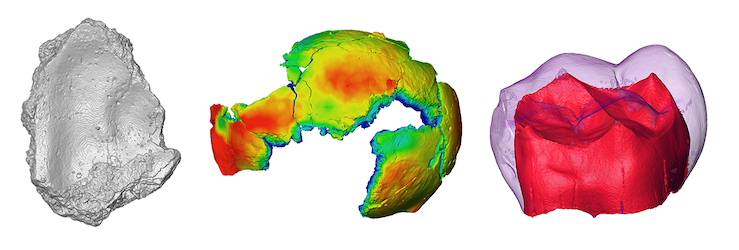The Sterkfontein Caves play a pivotal role in our understanding of the early hominin diversity in southern Africa. In particular, Pliocene deposits from Member 2 and the Jacovec Cavern have yielded exceptional remains of Australopithecus (e.g., “Little Foot”) that contribute to the ongoing debate on the variability of Australopithecus (i.e., were there two species at Sterkfontein?). Similarly, Member 5 and Milner Hall have the potential to provide critical information on the identity of early Homo specimens (i.e., H. gautengensis, H. habilis and/or H. erectus/ergaster?). Since 2017, as a member of the Sterkfontein research team, I have been addressing these fundamental questions by describing and identifying new specimens and studying enigmatic historical remains from the Sterkfontein Caves.

Results
- What can the shape of the Jacovec calotte tell us about its identity? The answer is here.
- In 1995, an enigmatic partial hominin cranium has been found in the 4 million-year-old lower-lying deposits of the Jacovec Cavern at Sterkfontein. In 2016, we decided to re-examine this exceptional specimen and comparatively assess its cranial vault thickness and composition (link).
- Recent excavations at Sterkfontein revealed hominin-bearing sedimentary deposits in Milner Hall that have the potential to yield Australopithecus, Paranthropus and/or early Homo specimens. We recently described two new hominin cranial fragments (link) and provided new evidence for discussing the taxonomic status of the hominin molar found in 2014 (link).
Syntheses
- For decades, the taxic diversity within Australopithecus has been debated. What can we learn from the assemblage of Sterkfontein and what is the way forward? Here I provide answers and raise new questions.
![]()
We are developing a “Sterkfontein project” on MorphoSource. 3D surfaces of fossil specimens are available online (link).
